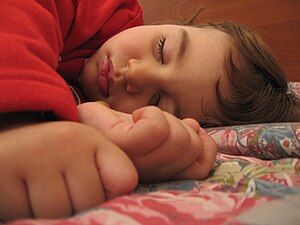What Matters/Physiological Needs
Appearance
Physiological Needs
[edit | edit source]
We all share simple requirements for sustaining life and health. Our physiological needs are the minimal requirements of survival. These physiological needs include:
- Air—oxygen within a particular range of pressure, concentration, and purity is vital to survival. Lack of oxygen kills by asphyxiation within minutes.
- Water—access to adequate safe drinking water, 8 cups of water per person per day, is a human need. Lack of water kills by dehydration within days.
- Food—Adequate calories, meeting certain minimum nutritional requirements are required to sustain life. Lack of food kills by starvation within days or weeks.
- Shelter—protection from extremes of heat, cold, intense sun, prolonged precipitation, or other exposure that can lead to hypothermia or hyperthermia. Protective clothing may fill this need in certain environments.
- Sanitation—isolation or protection from toxins and pathogens—this includes removal of human wastes, basic cleansing, and protections from harmful infectious agents such as parasites, bacteria, and viruses.
- Sleep—adequate sleep of sufficient depth. Research is incomplete or disputed, and sleep needs can vary by age and among individuals, however approximately 7-8 hours of uninterrupted sleep each night is a rough guideline.
- Touch—Active touch, perhaps as a caring caress, is essential to the growth and healthy development of humans. [1]
- Space—People require some amount of personal space, indoor living space, and outdoor space, to avoid overcrowding. The particular amount required is difficult to define.[2] Several benefits to urban space have been established.
Assignment:
[edit | edit source]If you are lacking in any of the physiological needs listed here, please obtain the help you need to fill these urgent needs. If you live in a developing area, then you will require help to overcome some of the Grand Challenges you face.
Suggestions for further reading:
[edit | edit source]- (Evaluate the book The Sleep Revolution: Transforming Your Life, One Night at a Time, by Arianna Huffington )
References
[edit | edit source]- ↑ See, for example: Partial and total isolation of infant monkeys
- ↑ Altman, Irwin; Amos Rapoport; Joachim F. Wohlwill (1980). Environment and culture. Springer. pp. 372. ISBN 978-0306403675. See: "Personal Space, Crowding, and Spatial Behaviour in a Cultural Context", by John R. Aiello and Donna E. Thomoson.
